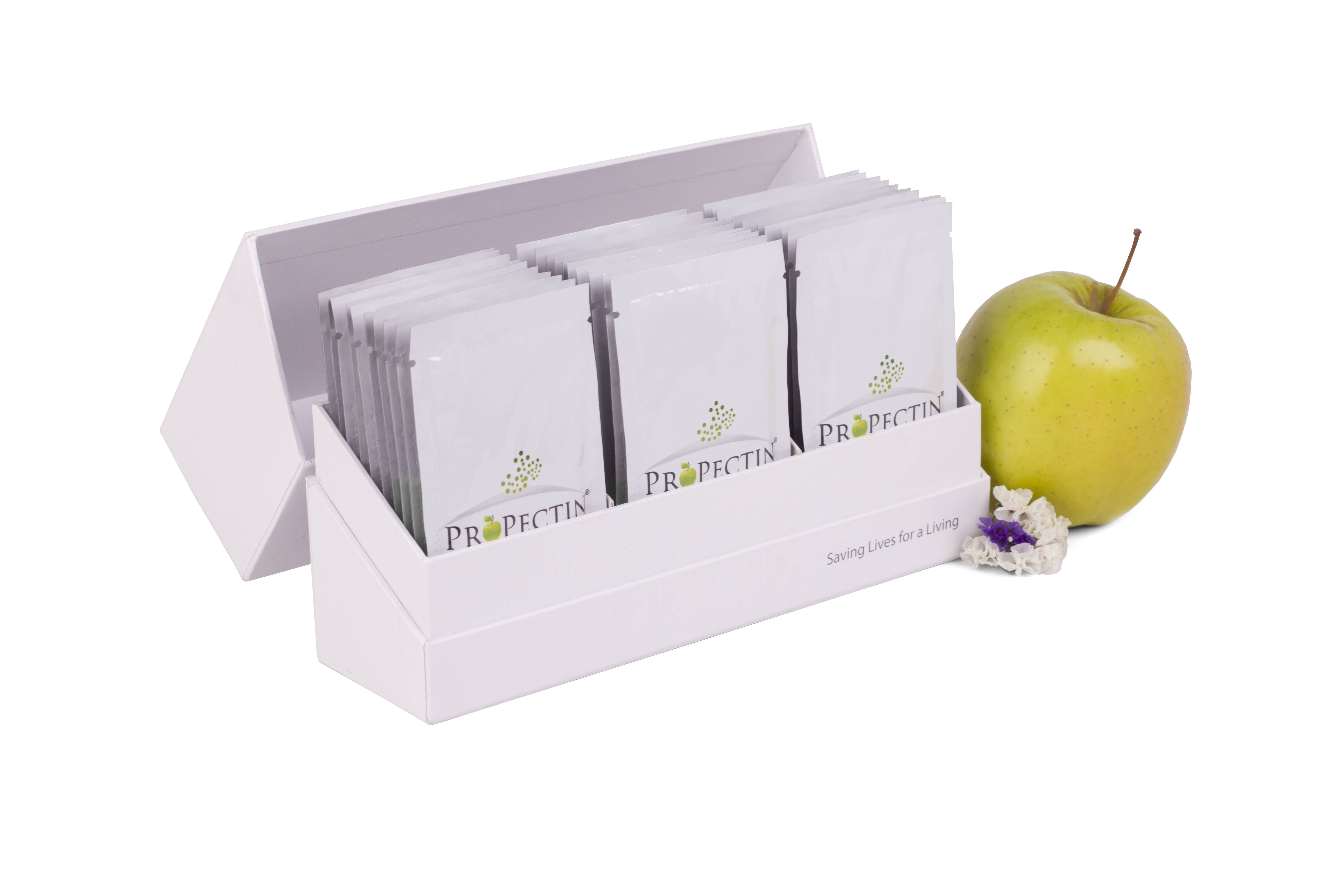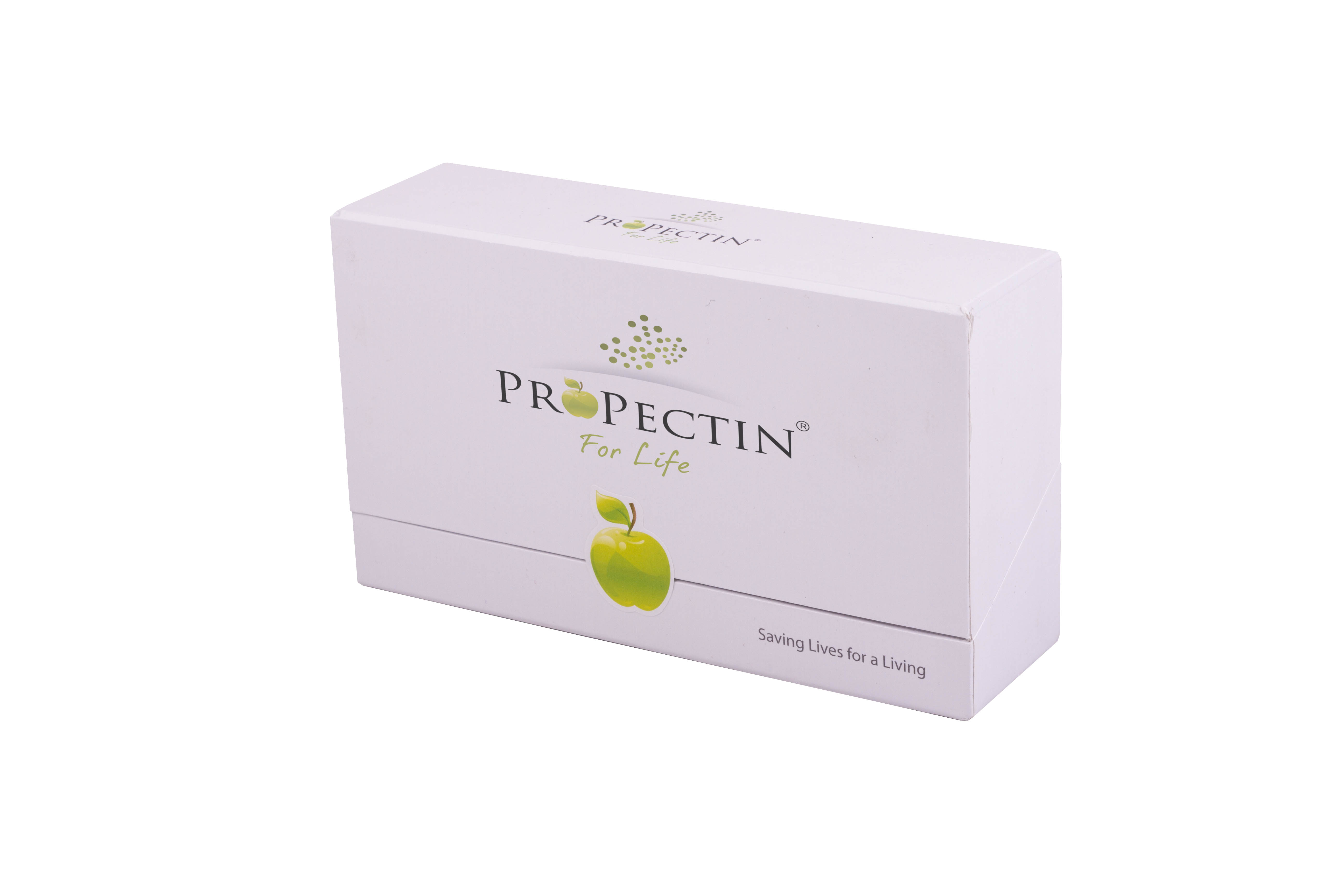その他 Propectin
Pectin was identified in 1825 by the French chemist and pharmacist, Henri Braconnot. An expert in the extraction of active components from plants, he discovered a heteropolysaccharide with gelling properties which he named "pectic acid". Pectin is a family of complex polysaccharides which are found in high amounts in plant primary walls, and are a family of covalently linked galacturonic acid-rich polymers I.
Since Braconnot's discovery, pectin has been used as a gelling agent for food preparation and is recognized for its many health benefits when consumed. As a dietary fiber, pectin is not enzymatically digested in the small intestine but is degraded by microbia in the colon. This enables pectin to keep its gelling action in the digestive tract, which in turn slows down digestion II.
After the Chernobyl nuclear catastrophe in 1986, pectin was used extensively to treat children in the region who were exposed to radiation. It was very effective in helping to remove radioactive particles from the intestinal tract.
In large-scale studies in the Chernobyl area, pectin was found to substantially reduce the Cesium 137 level by up to 63 percent.
Today, by taking ProPectin every day, people throughout Japan and other areas where radioactive materials have leaked into the air, ocean and ground are able to combat the dangerous health risks caused by such exposure.


